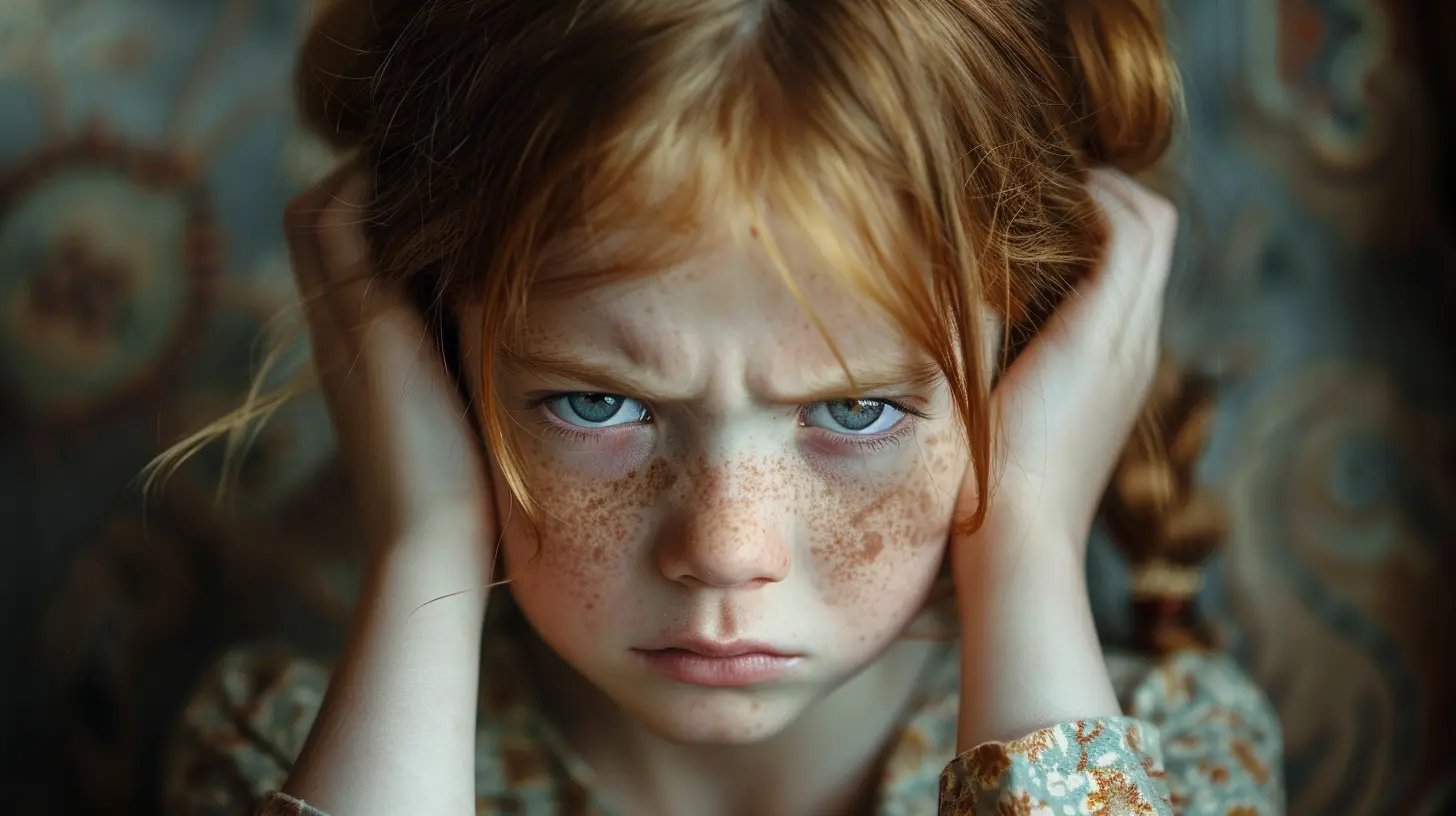Attachment Styles and Parenting: How Your Past Affects Your Kids
10 November 2025
Ever catch yourself saying something your parents used to say? Or reacting to your child's tantrum in a way that feels... oddly familiar? You're not alone. Our early experiences shape so much of how we act—and that includes how we parent. One of the biggest invisible influences? Attachment styles.
In this article, we’re diving deep into how your attachment style—formed back when you were just a peanut—can shape the way you bond with, discipline, and raise your own kiddos. Trust me, this isn’t about blaming anyone. It’s about understanding yourself so you can become the kind of parent you want to be.

What Is Attachment Theory, Anyway?
Attachment theory, at its core, is about how we connect with others. It was first introduced by psychologist John Bowlby and later expanded on by Mary Ainsworth. The basic idea? The bond we form with our caregivers in early childhood creates an emotional blueprint that we carry into adulthood.Think of it like the operating system you didn’t know was running in the background. It affects how you handle closeness, trust, independence, and emotional regulation. And yes—you guessed it—it plays a major role in how you parent.

The Four Main Attachment Styles
Let’s break it down real quick. Attachment styles fall into four categories:1. Secure Attachment
People with secure attachment had caregivers who were consistently responsive and nurturing. As adults, they tend to be comfortable with intimacy, trust, and emotional expression. As parents, they're usually pretty attuned to their child's needs.2. Anxious (or Preoccupied) Attachment
If your caregivers were inconsistent—you know, loving one moment, distant the next—you might have developed an anxious attachment. People with this style often fear abandonment and crave constant reassurance. In parenting, this can show up as over-involvement or anxiety about not being "good enough."3. Avoidant (or Dismissive) Attachment
If you learned early on that expressing your needs wouldn’t get a response, you might've learned to suppress them altogether. Avoidant folks tend to value independence over closeness and can be emotionally distant. This can lead to parenting patterns that are more aloof or overly focused on self-control.4. Disorganized (or Fearful-Avoidant) Attachment
This one’s a combo of anxious and avoidant. It often stems from trauma, neglect, or abuse. People with this style may feel a constant push-pull in relationships—craving closeness but also fearing it. As parents, they may struggle with emotional regulation and consistency.
How Your Attachment Style Affects Your Parenting
Okay, now that we’ve got those styles down, let’s talk parenting. Because guess what? Your attachment style isn't locked away in your past—it’s showing up every day, often without you even realizing it.1. Your Emotional Reactions
Attachment styles influence how you respond when your child is upset. Do you shut down emotionally? Overreact? Or are you usually calm and collected?For example:
- An avoidant parent might say, “You’re fine, stop crying,” suppressing both their emotions and their child’s.
- An anxious parent might panic, think they’ve failed, or start crying right along with their kid.
- A secure parent might acknowledge the feeling—“I know you’re upset. I’m here”—while helping the child calm down.
2. Your Conflict Style
Kids test boundaries. It’s their job. How do you handle it when they do?- An avoidant style might lead you to withdraw or use punishment to create distance.
- An anxious parent might give in, fearing rejection or meltdown.
- A secure parent is more likely to stand firm while still validating the child's feelings. They aim for connection, not control.
3. Your Ability to Tune In (AKA “Attunement”)
This is the biggie. Attunement is about really seeing and responding to your child's emotional needs. Not just fixing the problem, but sitting with them in the storm.If you weren’t attuned to as a child, doing that for someone else can feel foreign—or exhausting. But here’s the thing: you can absolutely learn it. In fact, just being aware of your own attachment tendencies is a powerful first step.

Breaking the Cycle: The Power of Self-Awareness
Here’s the good news: your attachment style isn’t a life sentence. It’s a starting point.Let’s be honest—many of us didn’t grow up in perfectly secure environments. And yet, so many people still manage to become incredible, emotionally available, secure parents. The secret sauce? Self-awareness and intentional healing.
Ask Yourself:
- What emotional needs didn't get met in my childhood?- How does that show up in my parenting?
- Do I react, or do I respond?
- Can I sit with my child’s big emotions—or do I avoid them?
- How do I show love—and how do I accept it?
These questions aren’t about digging up trauma just for the sake of it. They’re about pausing the autopilot and shifting into conscious parenting.
Practical Steps for Shifting Toward Secure Attachment
Let’s make this actionable. No theory or academic lingo—just real-life steps you can take.1. Start with Inner Work
Before you can pour into your kids, you’ve got to check in with your own emotional backpack.- Therapy: A good therapist can help uncover your attachment patterns and guide you toward healing.
- Journaling: Write about childhood memories, how they made you feel, and how they show up now.
- Mindfulness: Practicing being present helps you recognize emotional patterns before reacting.
2. Repair After Rupture
Look, you’re going to mess up. We all do. What matters isn't being perfect—it's repairing when things go sideways.After a blow-up, try saying:
“I got frustrated earlier, and I shouldn’t have yelled. That’s on me, not you.”
This tiny moment of vulnerability teaches your child that mistakes are okay—and that love isn’t conditional.
3. Build Emotional Vocabulary
Kids model what they see. If you can’t name your feelings, how can they?Practice saying:
- “I’m feeling overwhelmed right now, I need a moment to calm down.”
- “I see that you’re frustrated. That’s okay. Let’s talk about it.”
Naming emotions reduces their power and opens the door to connection.
4. Prioritize Emotional Safety
It’s not about being a pushover. Boundaries are essential. But when you enforce them with empathy and consistency, your kids feel safe—even when they’re upset.A securely attached child isn’t one who never cries or misbehaves. They’re the ones who know, deep down, that even on their worst day, they are still loved.
5. Parent Yourself, Too
This might sound weird, but stay with me: if part of you was neglected, ignored, or blamed as a child, that part still lives in you. That inner child needs patience, validation, and—yep—secure parenting.So when you notice yourself spiraling? Talk to that part like you would to your own child. With love, not judgment.
How Attachment Styles Influence the Parent-Child Bond Over Time
This isn’t just about surviving toddler tantrums or middle school mood swings. Your attachment style creates patterns that shape your child’s sense of self, their relationships, and their emotional resilience.Kids of Anxious Parents Might:
- Feel responsible for their parent’s emotions- Become people-pleasers
- Struggle with boundaries
Kids of Avoidant Parents Might:
- Learn to suppress emotions- Avoid seeking help
- Feel unworthy of emotional support
Kids of Secure Parents Typically:
- Feel seen and valued- Know how to express emotions
- Trust others and feel confident asking for help
Notice the difference? The goal isn't perfect parenting—it’s intentional parenting.
You’re Not Doomed by Your Past
Here’s a little truth bomb: just because you were raised a certain way doesn’t mean you have to continue the cycle. You are not your childhood. You are not your trauma. And you are certainly not a bad parent for struggling with this stuff.Healing is messy. Growth takes time. But each time you pause instead of react, apologize instead of blame, or hug instead of criticize—you’re rewriting the story not just for your child... but for yourself.
Final Thoughts
Parenting isn’t just about teaching—it’s about healing. When you start to unpack your own attachment style, you give your kids something truly powerful: a parent who shows up, mess and all, and says, “I’m here. I see you. I love you.”You don't have to do it perfectly. You just have to do it consciously.
all images in this post were generated using AI tools
Category:
Attachment TheoryAuthor:

Paulina Sanders
Discussion
rate this article
1 comments
Shania Richardson
In the garden of our hearts, roots intertwine, Past shadows whisper tales, shaping the vine. Through love's embrace or fear's cold clasp, We nurture our young, in memories we grasp. Each style a thread in the fabric we weave, A legacy of connection, in which they believe.
November 26, 2025 at 4:02 AM

Paulina Sanders
Thank you for beautifully capturing the essence of how our past experiences and attachment styles influence the nurturing of our children. It's a poignant reminder of the deep connections we create and pass on.


